We’ve reached the end of my six-year stroll down memory lane before COVID wiped out the 2020 workshop season. As it turns out, I also had already posted about the Albuquerque Balloon Fiesta back in March so…here it is again. Why re-invent the wheel, right? 😉
After all of my workshops for 2020 were either canceled or postponed to 2021 I did end up working a one-day class at the Flagstaff Arboretum. The lessons taught on macro photography by Amy Horn were great but I did not take any photos myself due to the lack of a monsoon season and therefore a lack of wildflowers. So, here you go…The Albuquerque Balloon Fiesta revisited!
If you’ve never been to the Albuquerque Balloon Fiesta you really must put it on your bucket list. There was really nothing about it I didn’t like, ok, well…maybe the cold mornings, but it was ALL worth it!
 Without a doubt, you will be there with a whole lot of people, so prepare yourself for the crowds if you are a landscape photographer and used to being by yourself.
Without a doubt, you will be there with a whole lot of people, so prepare yourself for the crowds if you are a landscape photographer and used to being by yourself.
 But here’s the cool thing…you are RIGHT down on the launch field mingling around with all of the balloons and their crews. We did not meet a single crew that was not happy to talk with us about ballooning and showed incredible patience in answering everyone’s questions.
But here’s the cool thing…you are RIGHT down on the launch field mingling around with all of the balloons and their crews. We did not meet a single crew that was not happy to talk with us about ballooning and showed incredible patience in answering everyone’s questions.
 As in landscape photography, the weather will dictate whether the ballons launch or not. Rain, wind and fog are common events that ground the festival.
As in landscape photography, the weather will dictate whether the ballons launch or not. Rain, wind and fog are common events that ground the festival.
 The sheer amount of envelopes (that’s what they call the balloon part) and how close they are to each other will blow your mind.
The sheer amount of envelopes (that’s what they call the balloon part) and how close they are to each other will blow your mind.

Getting there early for Dawn Patrol is also pretty cool…literally. Dress for it. Albuquerque is at 5,000 feet and pretty chilly in the early morning.


Shooting the balloons as they heat up the air is a crapshoot. I have several frames that are black because just as I was releasing the shutter the pilots turned off the fire. You are going to want high ISO in the morning because shooting with a tripod is difficult as you are constantly changing where you are aiming.

As the first wave in the mass ascension take-off it was hard for me to be patient and wait for the following waves and the sunrise. These early ones, before sunrise, are just not as brilliant as the ones with the sunlight on them.



 I’m all about color, patterns and design. It was fun, though, once I got home, to play with black and white on some of the images. I dug the flags.
I’m all about color, patterns and design. It was fun, though, once I got home, to play with black and white on some of the images. I dug the flags.
 At times, as they flew overhead, it seemed you could reach right up and shake the pilot’s hand.
At times, as they flew overhead, it seemed you could reach right up and shake the pilot’s hand.

We went to the Gas Balloon launch one evening. It was definitely one of the highlights of the workshop. SO fascinating. These folks fill their balloons with gas (hydrogen or helium) and do a distance race that lasts 3 days or so. They dress like they are going to the top of Everest as the balloons fly at several thousand feet where the air is much cooler.

They carry lots of sand so they can get lift by dumping it. This poor team was tossing out a LOT of sand as they weren’t getting the lift they needed to get into the airstream with the other teams. For more info on this type of ballooning check out this article: http://www.ltaflightmagazine.com/gas-ballooning-faqs/
I think you will find it interesting and it’s a quick read.

Now for the REALLY fun part. All balloons launch during the mass ascension each day. They also have the Special Shape Rodeo which highlights these balloons.




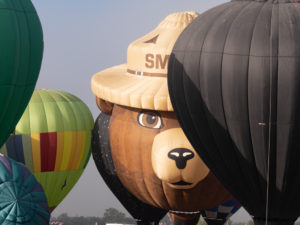
I’ve never taken so many images in a single day in my life. And I swear, each day, I was seeing balloon shapes and colors I had never seen before.
The festival is in October. Hopefully, by then the Coronavirus will have calmed down and our workshops and mass gatherings will be back up and running.
Until then, stay healthy, wash your hands and keep shooting!






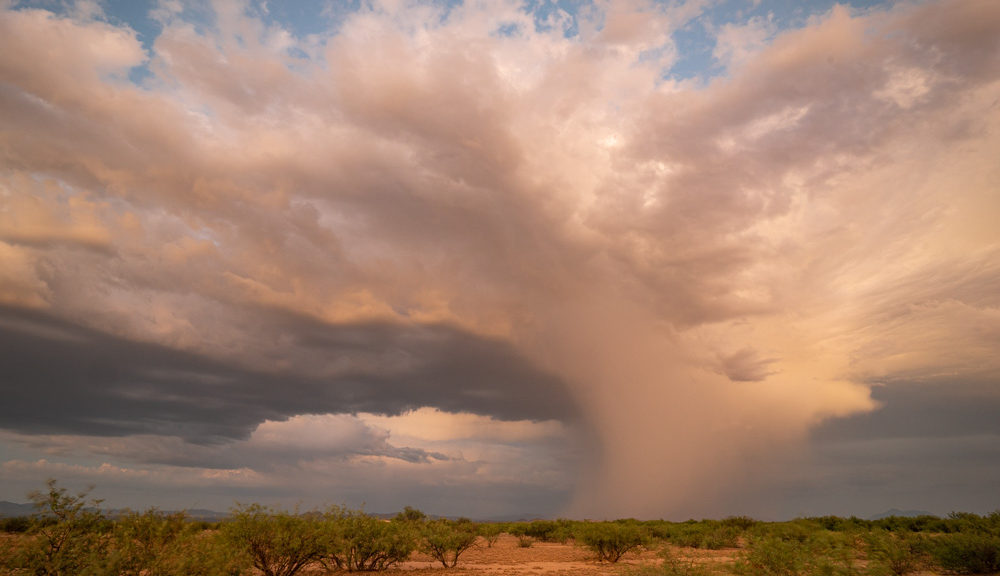
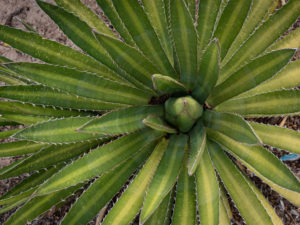
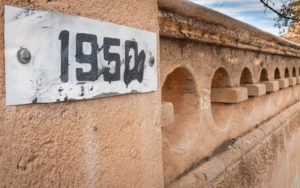
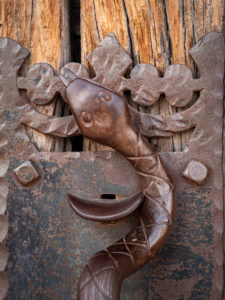
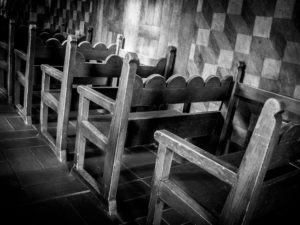
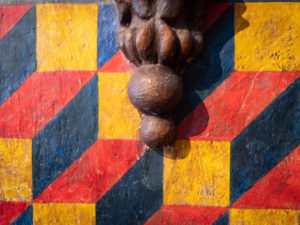
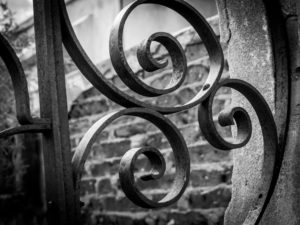
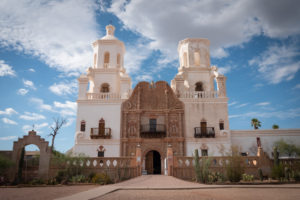
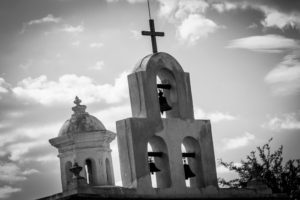
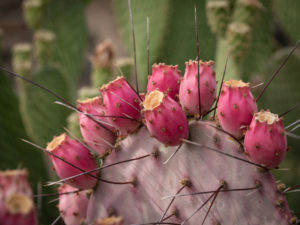
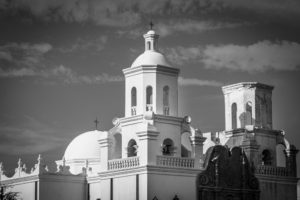
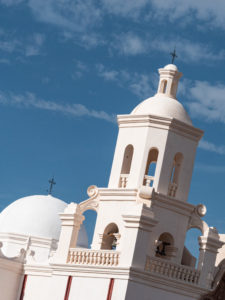
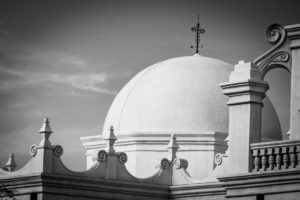
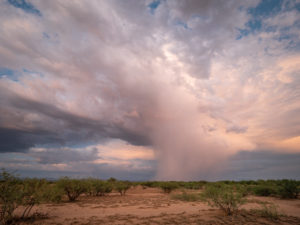
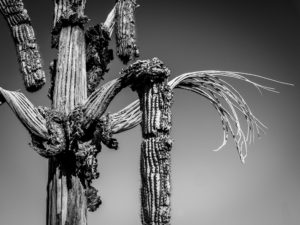
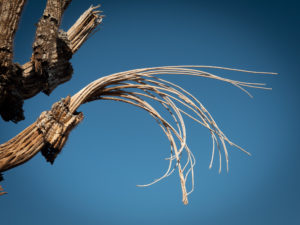
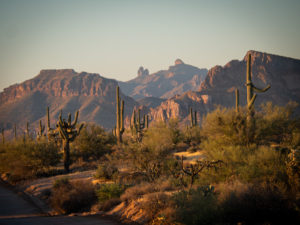

 Such an interesting combination of sign and statue. Like…are you welcoming me to…the end? Yikes!
Such an interesting combination of sign and statue. Like…are you welcoming me to…the end? Yikes!

 Here are some plants and a pet that requires little attention.
Here are some plants and a pet that requires little attention.













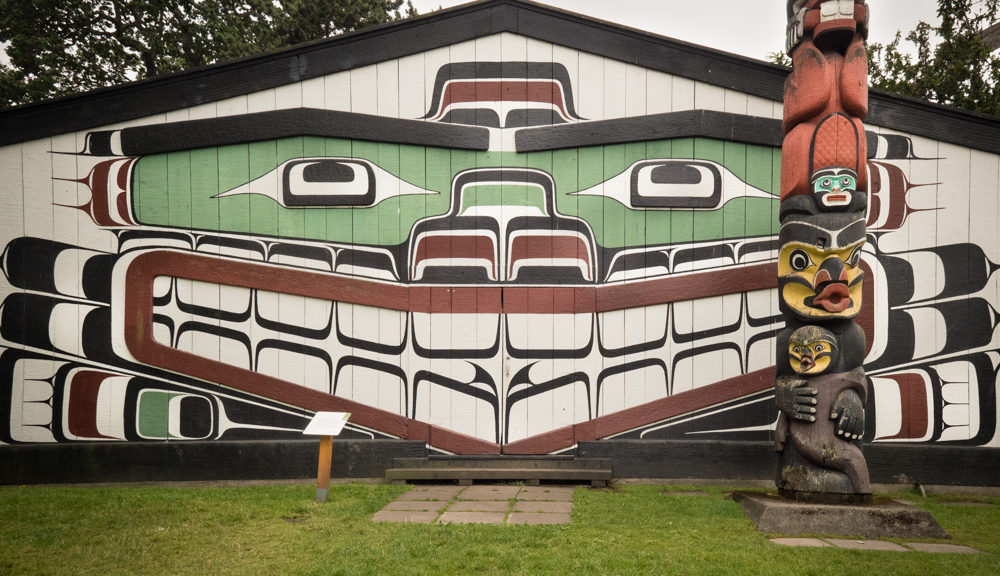
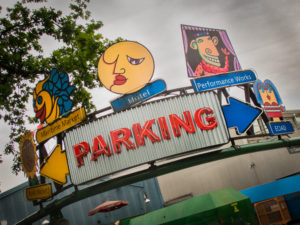
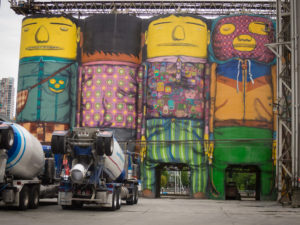
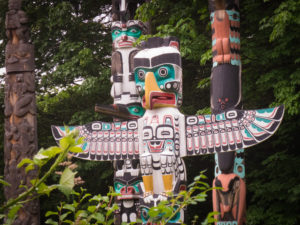
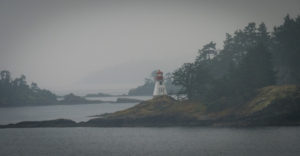
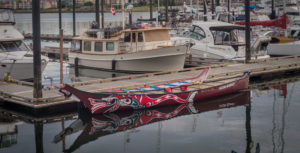 I could shoot boats all day long.
I could shoot boats all day long.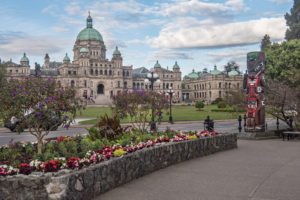 The Parliament Building was amazing.
The Parliament Building was amazing.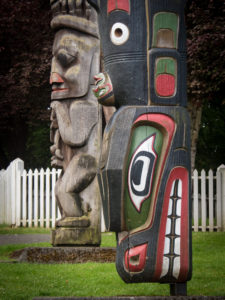
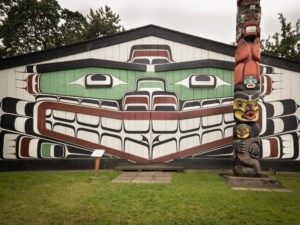
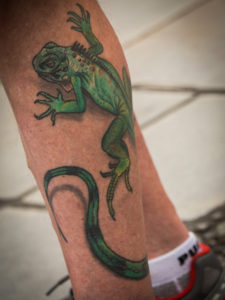
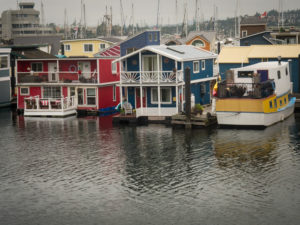
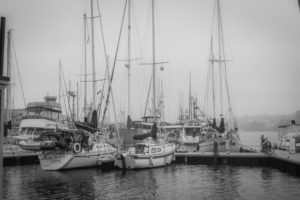
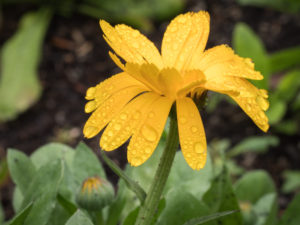
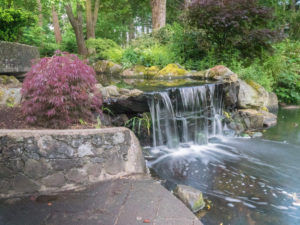
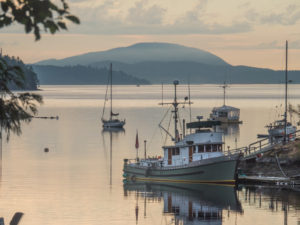
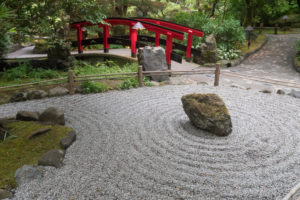
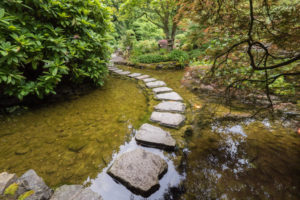
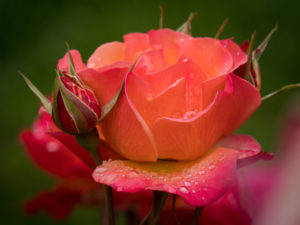
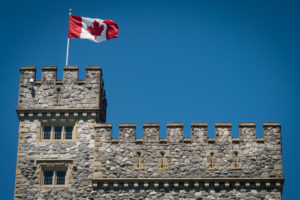
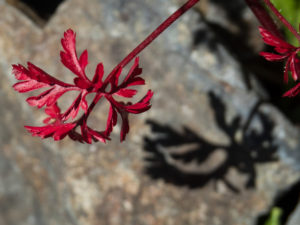
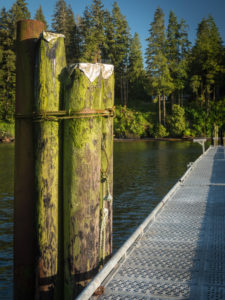
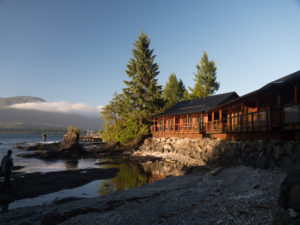 Yes, we stayed n these cabins. Check out the low tide.
Yes, we stayed n these cabins. Check out the low tide.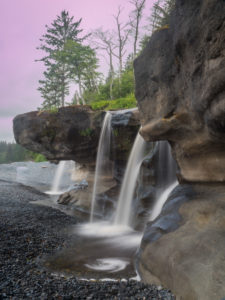
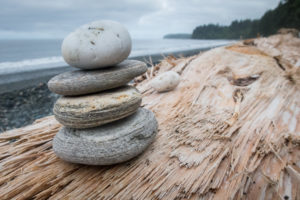
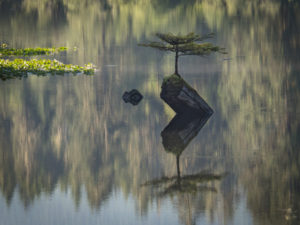
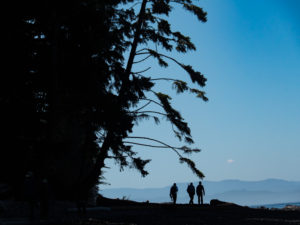
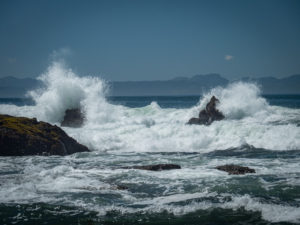
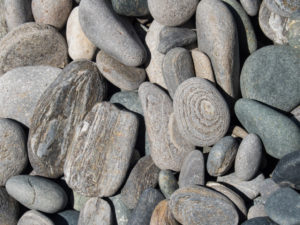
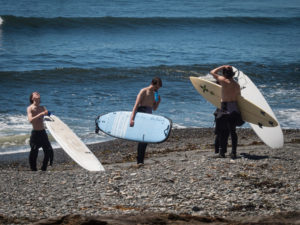
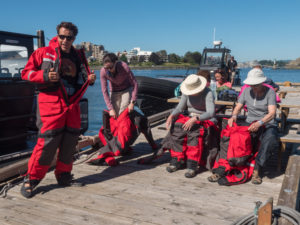 We each had to wear these survival suits. They were really hot but would save our lives should we end up in the ocean.
We each had to wear these survival suits. They were really hot but would save our lives should we end up in the ocean.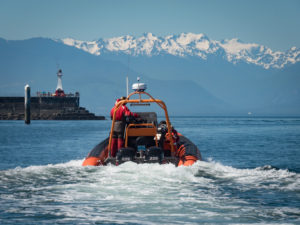
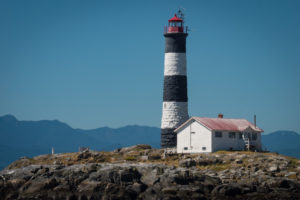
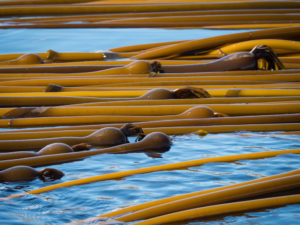
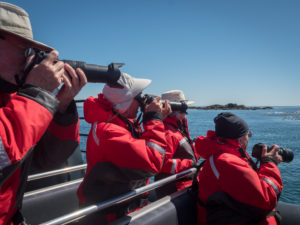
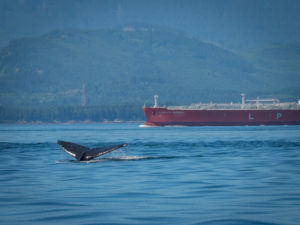 Ocean-going tankers and whale collisions is a real problem.
Ocean-going tankers and whale collisions is a real problem.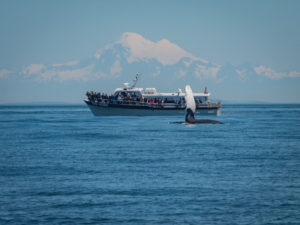 Another tour boat.
Another tour boat.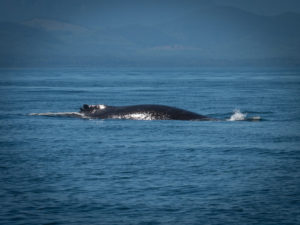
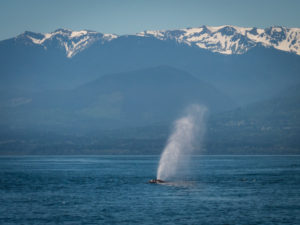






 To the right, you can see some blue rafts. These private boaters packed the night before and launched later that morning.
To the right, you can see some blue rafts. These private boaters packed the night before and launched later that morning.

 Here we are having breakfast with Gary. He ran out to his car, grabbed some books, signed them, and sold them. He’s a great storyteller and was fun to hang out with.
Here we are having breakfast with Gary. He ran out to his car, grabbed some books, signed them, and sold them. He’s a great storyteller and was fun to hang out with.


 I like pebbles.
I like pebbles.
 Unlike the Oregon Sampler, we photo guides did not have to drive. That allowed us more time to get to know our clients. And what an amazing group.
Unlike the Oregon Sampler, we photo guides did not have to drive. That allowed us more time to get to know our clients. And what an amazing group. It doesn’t matter how many times I go to Sedona, a quick 30-minute drive from my home, I am amazed at its beauty. This was our initial afternoon/sunset shoot.
It doesn’t matter how many times I go to Sedona, a quick 30-minute drive from my home, I am amazed at its beauty. This was our initial afternoon/sunset shoot. The next morning we hit Airport Mesa for sunrise and were treated with some hot air balloons in the distance.
The next morning we hit Airport Mesa for sunrise and were treated with some hot air balloons in the distance. Before heading to Grand Canyon we dropped into Slide Rock State Park for some water action.
Before heading to Grand Canyon we dropped into Slide Rock State Park for some water action. The grand landscapes easily draw people’s attention but don’t forget to look at the details.
The grand landscapes easily draw people’s attention but don’t forget to look at the details.
 Putting people in images helps show perspective and scale.
Putting people in images helps show perspective and scale. Thank goodness for Desert View Tower! Nothing like a good man-made object on the edge of a natural wonder to help capture what you’re seeing and feeling.
Thank goodness for Desert View Tower! Nothing like a good man-made object on the edge of a natural wonder to help capture what you’re seeing and feeling. One can pretty much count on an elk encounter at the South Rim. They don’t ever seem too bothered by us humans.
One can pretty much count on an elk encounter at the South Rim. They don’t ever seem too bothered by us humans.






 Black and white can be a good choice if you can’t quite get the colors right.
Black and white can be a good choice if you can’t quite get the colors right. On the way to Monument Valley, you have to drive through Kayenta. Just outside of Kayenta is Agathla Peak which rises over 1500 feet above the surrounding terrain. The mountain is considered sacred by the Navajo.
On the way to Monument Valley, you have to drive through Kayenta. Just outside of Kayenta is Agathla Peak which rises over 1500 feet above the surrounding terrain. The mountain is considered sacred by the Navajo.

 Our afternoon/sunset shoot at the famous mittens.
Our afternoon/sunset shoot at the famous mittens.







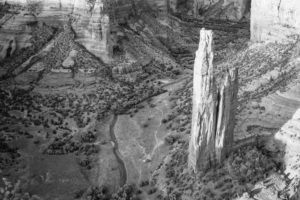



 Shooting from one of the rim viewpoints.
Shooting from one of the rim viewpoints. People still live at the bottom of the canyons. Can you find the house?
People still live at the bottom of the canyons. Can you find the house?

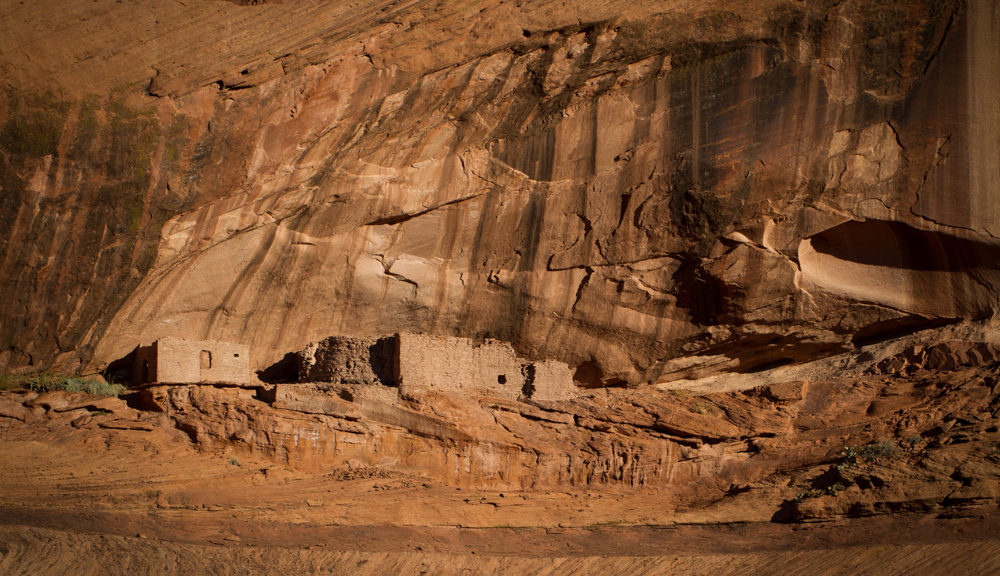
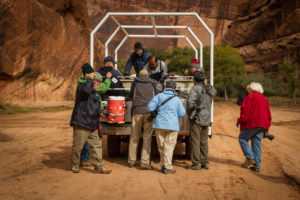 The next morning, Thursday, we loaded a tour truck and headed out on an eight-hour tour of Canyon del Muerto. Canyon de Chelley has one entrance before splitting into two canyons.
The next morning, Thursday, we loaded a tour truck and headed out on an eight-hour tour of Canyon del Muerto. Canyon de Chelley has one entrance before splitting into two canyons.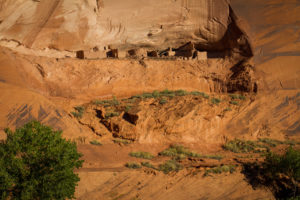
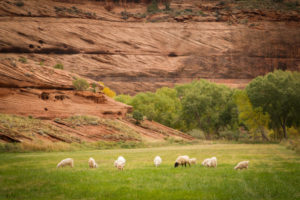
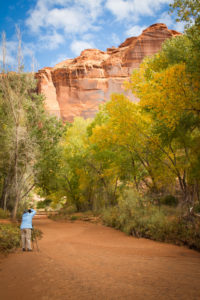
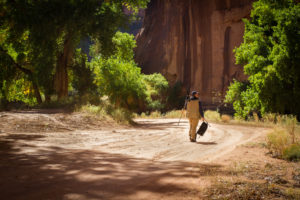
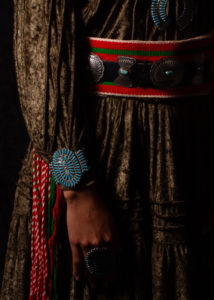
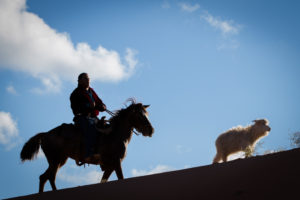
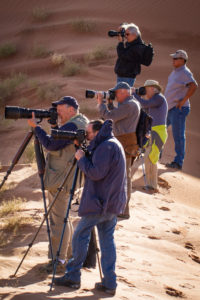
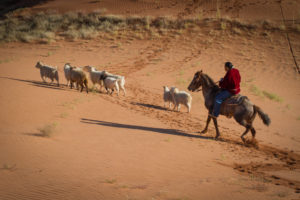
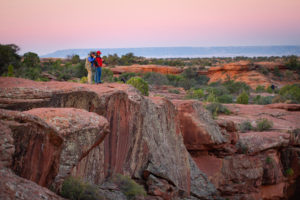
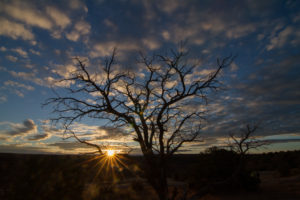
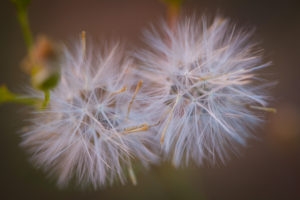
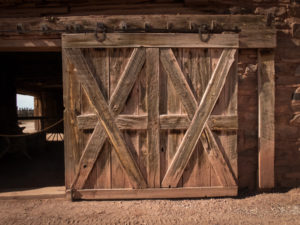
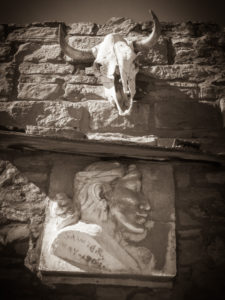
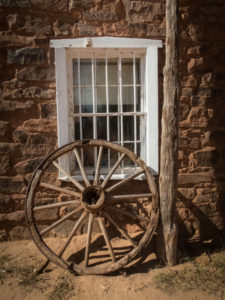
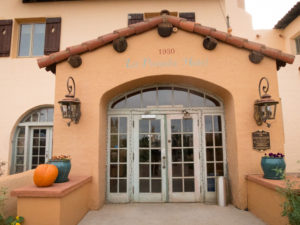






 This image was super contrasty as I shot it mid-day and din’t use my tripod or diffuser. To help with that issue I turned it into a low contrast black and white image.
This image was super contrasty as I shot it mid-day and din’t use my tripod or diffuser. To help with that issue I turned it into a low contrast black and white image.
 I believe it was this workshop where I first began really noticing and being fascinated with shadows.
I believe it was this workshop where I first began really noticing and being fascinated with shadows. I did break out my macro lens and capture these little red guys crawling all over a cactus flower.
I did break out my macro lens and capture these little red guys crawling all over a cactus flower. Nature’s patterns are everywhere! Shooting macro without a tripod can be difficult as the depth of focus is sometimes as thin as a credit card. Few people can hold steady enough to keep the subject in focus at that level. What I began to realize but couldn’t articulate for several more years is that I’m more of a close-up photographer as opposed to true macro.
Nature’s patterns are everywhere! Shooting macro without a tripod can be difficult as the depth of focus is sometimes as thin as a credit card. Few people can hold steady enough to keep the subject in focus at that level. What I began to realize but couldn’t articulate for several more years is that I’m more of a close-up photographer as opposed to true macro. This image shows the depth of focus situation. The stamen around the glob in the center are in focus while the glob in the middle is not.
This image shows the depth of focus situation. The stamen around the glob in the center are in focus while the glob in the middle is not.












 The train ride culminated at Perkinsville, an abandoned train station on the Arizona Central Railroad. The Verde Cayon Railroad train engine disconnects at Perkinsville moves along a siding and reconnects at the opposite end of the train for the return trip to Clarkdale.
The train ride culminated at Perkinsville, an abandoned train station on the Arizona Central Railroad. The Verde Cayon Railroad train engine disconnects at Perkinsville moves along a siding and reconnects at the opposite end of the train for the return trip to Clarkdale. Our sunset shoot was at Crescent Moon Ranch with an iconic view of Cathedral Rock in Sedona. Most landscapers want people-free images. I find that people make it much more interesting.
Our sunset shoot was at Crescent Moon Ranch with an iconic view of Cathedral Rock in Sedona. Most landscapers want people-free images. I find that people make it much more interesting.


 By our sunset shoot at Marg’s Draw, the sun was already trying to come out.
By our sunset shoot at Marg’s Draw, the sun was already trying to come out. Folks were practicing their settings, compositions, and hyperfocal distance, all while trying to stay out of each other’s shots!
Folks were practicing their settings, compositions, and hyperfocal distance, all while trying to stay out of each other’s shots! The raingear was kept close by as last-minute sprinkles found their way to the ground.
The raingear was kept close by as last-minute sprinkles found their way to the ground. Clouds DO make for spectacular sunsets.
Clouds DO make for spectacular sunsets.
 This crew got out of their jeep to photograph another jeep climbing up the Slickrock as only a jeep can do.
This crew got out of their jeep to photograph another jeep climbing up the Slickrock as only a jeep can do. We also had a model lesson with natural light out on the trail.
We also had a model lesson with natural light out on the trail.


 We stopped to view the Seven Sacred Pools. I feel the cowboy is needed in this image to show scale.
We stopped to view the Seven Sacred Pools. I feel the cowboy is needed in this image to show scale.



 Here is the instructor, Colleen, and two participants photographing bubbles and/or water patterns.
Here is the instructor, Colleen, and two participants photographing bubbles and/or water patterns. Here is one of my water patterns.
Here is one of my water patterns. I love the glow of backlighting.
I love the glow of backlighting.